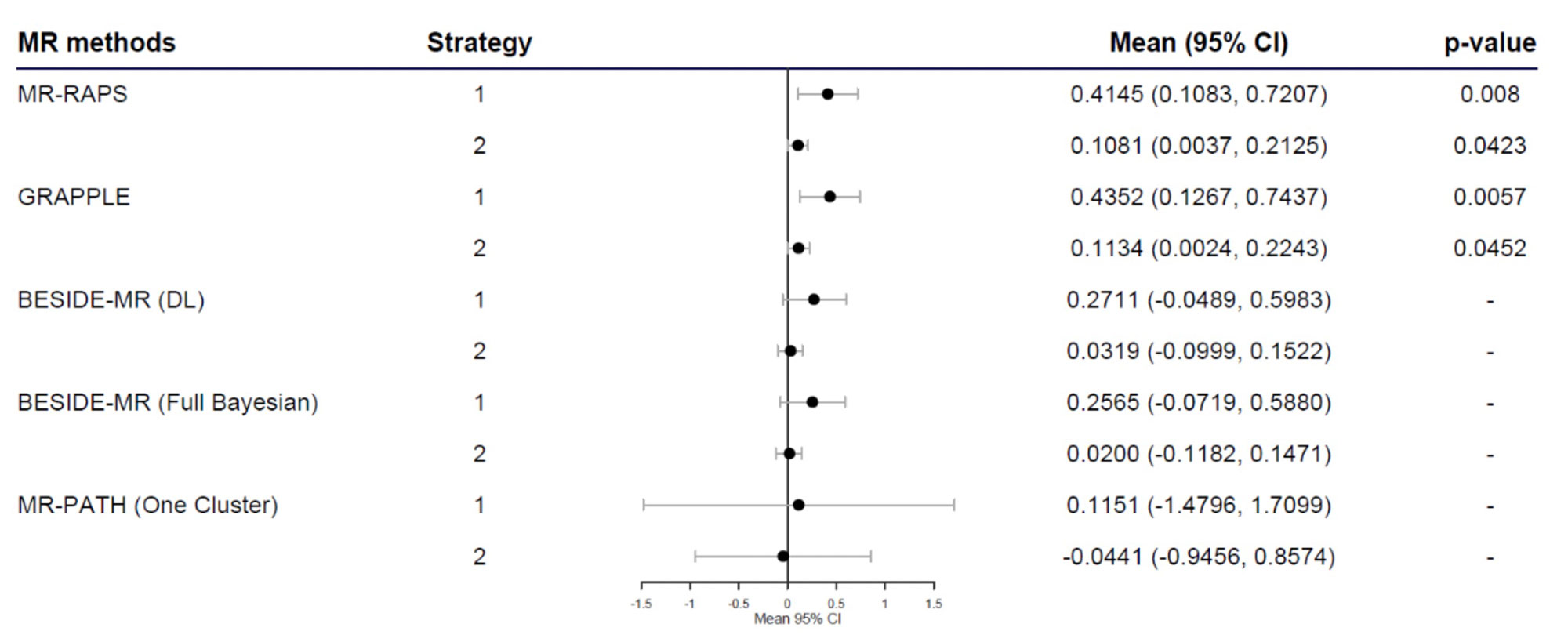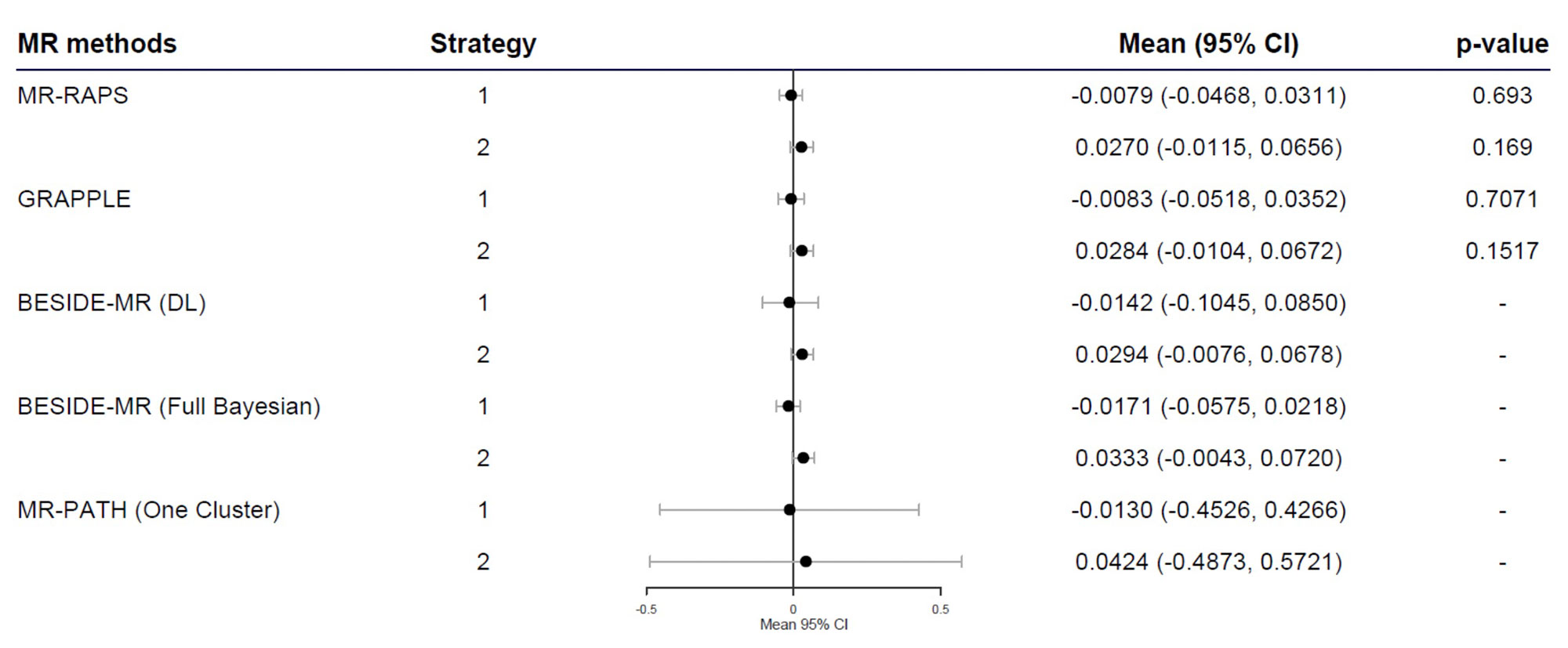Session Information
Session Type: Poster Session D
Session Time: 1:00PM-3:00PM
Background/Purpose: Gout is the most common inflammatory arthritis, and osteoarthritis is the leading cause of arthritis globally. Gout and osteoarthritis frequently coexist in the same patient. However, the causal relationship between them remains unclear. Hence, we undertook this bi-directional Menderlian Randomisation (MR) study to investigate possible causal relationships between gout and osteoarthritis.
Methods: This study collected the summary statistics from multiple datasets, including UK Biobank and Finn Biobank R6. To estimate the causal effect and further explore the potential pathways between gout and osteoarthritis, we considered four MR methods robust to weak instrumental variables (IVs), MR-RAPS, GRAPPLE, BESIDE-MR, and MR-PATH. These four methods do not assume effect homogeneity and attempt to distinguish the biological causal pathways. Therefore, to increase the credibility and validity of the research findings, we triangulated the evidence across two different strategies for selecting data sources of exposure and outcome datasets (Table 1).
For IVs selection, we selected the single nucleotide polymorphisms(SNPs) with weak Linkage Disequilibrium(LD) at correlation coefficient square R2< 0.001 and selection p-value around 10-5. We used the GRAPPLE, BESIDE-MR, and MR-PATH as the sensitivity analysis methods compared to the MR-RAPS as the primary analysis.
Results: For the causality between OA and gout, the GRAPPLE and MR-RAPS methods showed the significant causal effects of OA on gout in both strategies. In Figure 1, the mean of MR-RAPS in strategy 1 was 0.4145 (95% CI 0.1083-0.7207, p-value 0.008), and the mean in strategy 2 was 0.1081 (95% CI 0.0037-0.2125, p-value 0.0423). The mean of GRAPPLE in strategy 1 was 0.4352 (95% CI 0.1267-0.7437, p-value 0.0057), and the mean in strategy 2 was 0.1134 (95% CI 0.0024-0.2243, p-value 0.0452). However, BESIDE-MR and MR-PATH both gave the 95% credible interval covering zero, with a wide range, especially for MR-PATH, and these did not provide sufficient information to determine the causality between OA and gout (Figures 1 and 2).
Conclusion: For the European population, we did not really find consistent results for the causality between OA and gout. There is insufficient evidence to show that gout could affect osteoarthritis risk.
To cite this abstract in AMA style:
Tsai Y, Chang Y, Chen C, Doherty M, Zhang W, Kuo C. Investigating a Possible Bi-Directional Causal Relationship Between Gout and Osteoarthritis for the European Population: Two-Sampled Mendelian Randomization Analysis Study [abstract]. Arthritis Rheumatol. 2022; 74 (suppl 9). https://acrabstracts.org/abstract/investigating-a-possible-bi-directional-causal-relationship-between-gout-and-osteoarthritis-for-the-european-population-two-sampled-mendelian-randomization-analysis-study/. Accessed .« Back to ACR Convergence 2022
ACR Meeting Abstracts - https://acrabstracts.org/abstract/investigating-a-possible-bi-directional-causal-relationship-between-gout-and-osteoarthritis-for-the-european-population-two-sampled-mendelian-randomization-analysis-study/



